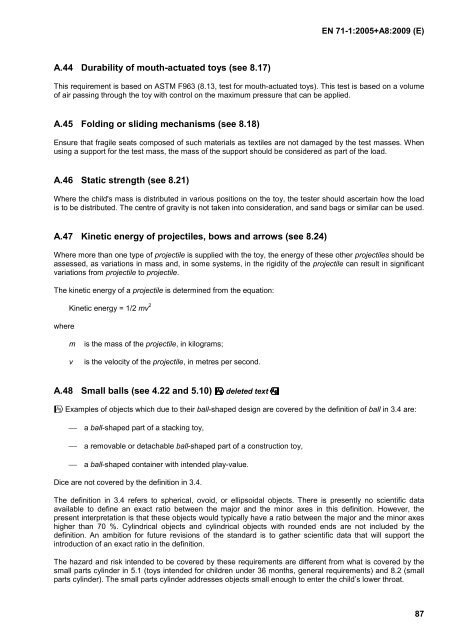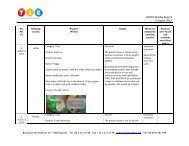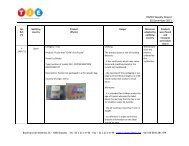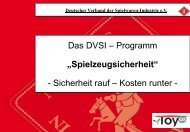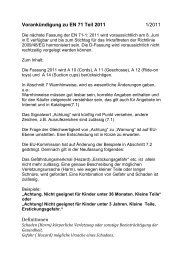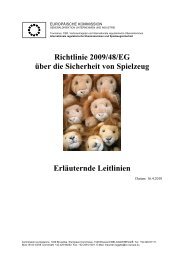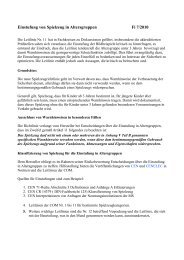You also want an ePaper? Increase the reach of your titles
YUMPU automatically turns print PDFs into web optimized ePapers that Google loves.
A.44 Durability of mouth-actuated toys (see 8.17)<br />
<strong>EN</strong> <strong>71</strong>-1:<strong>2005+</strong><strong>A8</strong>:2009 (E)<br />
This requirement is based on ASTM F963 (8.13, test for mouth-actuated toys). This test is based on a volume<br />
of air passing through the toy with control on the maximum pressure that can be applied.<br />
A.45 Folding or sliding mechanisms (see 8.18)<br />
Ensure that fragile seats composed of such materials as textiles are not damaged by the test masses. When<br />
using a support for the test mass, the mass of the support should be considered as part of the load.<br />
A.46 Static strength (see 8.21)<br />
Where the child's mass is distributed in various positions on the toy, the tester should ascertain how the load<br />
is to be distributed. The centre of gravity is not taken into consideration, and sand bags or similar can be used.<br />
A.47 Kinetic energy of projectiles, bows and arrows (see 8.24)<br />
Where more than one type of projectile is supplied with the toy, the energy of these other projectiles should be<br />
assessed, as variations in mass and, in some systems, in the rigidity of the projectile can result in significant<br />
variations from projectile to projectile.<br />
The kinetic energy of a projectile is determined from the equation:<br />
where<br />
Kinetic energy = 1/2 mv 2<br />
m is the mass of the projectile, in kilograms;<br />
v is the velocity of the projectile, in metres per second.<br />
A.48 Small balls (see 4.22 and 5.10) +deleted text,<br />
)Examples of objects which due to their ball-shaped design are covered by the definition of ball in 3.4 are:<br />
⎯ a ball-shaped part of a stacking toy,<br />
⎯ a removable or detachable ball-shaped part of a construction toy,<br />
⎯ a ball-shaped container with intended play-value.<br />
Dice are not covered by the definition in 3.4.<br />
The definition in 3.4 refers to spherical, ovoid, or ellipsoidal objects. There is presently no scientific data<br />
available to define an exact ratio between the major and the minor axes in this definition. However, the<br />
present interpretation is that these objects would typically have a ratio between the major and the minor axes<br />
higher than 70 %. Cylindrical objects and cylindrical objects with rounded ends are not included by the<br />
definition. An ambition for future revisions of the standard is to gather scientific data that will support the<br />
introduction of an exact ratio in the definition.<br />
The hazard and risk intended to be covered by these requirements are different from what is covered by the<br />
small parts cylinder in 5.1 (toys intended for children under 36 months, general requirements) and 8.2 (small<br />
parts cylinder). The small parts cylinder addresses objects small enough to enter the child’s lower throat.<br />
87


